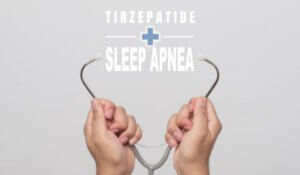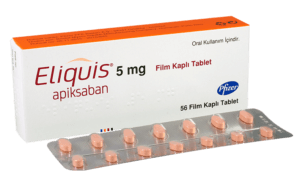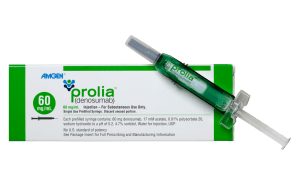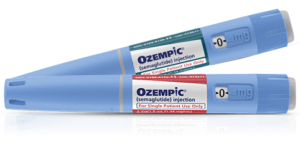 Interrupted breathing during sleep, technically known as Obstructive Sleep Apnea (OSA), is a fairly common problem that has, until now, been difficult to address with pharmaceutical treatment. OSA has one quite special characteristic, in that people living with the condition often don’t know that they have it because it occurs only when they are sound asleep. The people who do know about it are the ones who share their bedroom. Apnea typically causes loud snoring (or snorting) and sudden body movements as the afflicted person fights subconsciously to regain breath – which can make quite an impression on the roommate of someone living with OSA.
Interrupted breathing during sleep, technically known as Obstructive Sleep Apnea (OSA), is a fairly common problem that has, until now, been difficult to address with pharmaceutical treatment. OSA has one quite special characteristic, in that people living with the condition often don’t know that they have it because it occurs only when they are sound asleep. The people who do know about it are the ones who share their bedroom. Apnea typically causes loud snoring (or snorting) and sudden body movements as the afflicted person fights subconsciously to regain breath – which can make quite an impression on the roommate of someone living with OSA.
So far, the only available means of addressing OSA have been some form of physical intervention. Most times, the choice is to ensure a positive airflow with some form of mechanical air pump – Positive Airway Pressure (PAP). This comes in different forms, primarily Continuous Positive Airway Pressure (CPAP), Expiratory Positive Airway Pressure (EPAP), or Bi-level Positive Airway Pressure (BiPAP). But in extreme cases, it may be necessary to undergo surgery to widen the throat or nasal passages or reposition the tongue or jaws.
The other known physical change has been regarding the relationship between body weight and breathing, with reliance on the standard methods of weight loss, which are diet and exercise. As we will show further down, the success of new obesity treatments has led to some convincing evidence of their ability to ease sleep disturbances caused by obstructive sleep apnea.
To understand the benefits of the alternative treatment for Obstructive Sleep Apnea, it’s important to first outline the causes of the condition.
Outline of Obstructive Sleep Apnea
Obstructive Sleep Apnea (OSA) is a common and potentially serious sleep issue. It is identified by repeated pauses in breathing (apneas) while sleeping. These pauses happen when the muscles in the throat relax too much and block the air passage.
What occurs during an episode of apnea?
While sleeping in the deeper REM (rapid eye movement) sleep stages, the throat muscles and soft tissues around the airway naturally loosen up. In individuals with OSA, this relaxation can go beyond limits, leading to airway collapse or blockage, which results in breathing interruptions called apneas.
The primary symptom is a pause in breathing that can last from a few seconds to more than a minute. Often, these episodes are preceded by loud snoring that suddenly stops. The body might react with gasping or choking sounds as it tries to reopen the airway and resume breathing. During an apnea episode, blood oxygen levels drop. The brain senses this oxygen deficiency and sends signals to wake up slightly to restore breathing. This typically happens without awareness and may result in sudden body movements and jerks.
The individual experiences awakenings referred to as micro-arousals. When the brain triggers a response, the throat muscles regain enough strength to reopen the airway, leading to a resumption of breathing, often accompanied by a loud gasp or snort. The individual typically drifts back to sleep swiftly without full awareness of experiencing an apnea episode. However, this cycle can repeat throughout the night. The sleeper may not easily recall these brief interruptions after waking. They can disrupt the sleep cycle and hinder the achievement of deep restorative sleep stages.
The Connection Between Apnea and REM Sleep
REM sleep is a phase in the sleep cycle that plays a significant role in memory consolidation, emotional regulation, and cognitive function. REM sleep typically accounts for 20% to 25% of total sleep duration. It is characterized by eye movements beneath closed eyelids, increased rates of breathing and heartbeats, and elevated blood pressure. Skeletal muscles responsible for movements experience temporary paralysis (atonia) during REM sleep. Even though the brain may still send movement signals in response to vivid dreams that commonly occur during this stage, the body is locked.
Even if someone gets seven or eight hours of sleep, a lack of adequate REM sleep can lead to a range of negative effects. These include memory problems, feelings of depression, and daytime drowsiness. There is even evidence that a reduction in REM sleep can cause a higher rate of cardiovascular disease.
There is a close connection between apnea and REM sleep. Muscle atonia not only stops the body from acting out dreams but also makes the airways in people with OSA more likely to collapse. For them, breathing becomes more irregular during REM sleep than in stages of sleep, possibly increasing the chances of apnea episodes.
Studies show that pauses in breathing while sleeping can occur often and be more severe during REM sleep. The relaxation of throat muscles and irregular breathing patterns during this phase contributes to the possibility of airway blockage. Apneas during REM sleep also tend to last longer than those in non-REM stages. This prolonged time without breathing can cause significant drops in blood oxygen levels, putting extra pressure on the heart. Since REM sleep is essential for restoring brain functions, disruptions during this phase can lead to more disturbed sleep and lower-quality rest. This may cause increased drowsiness and cognitive difficulties and can worsen the dangers linked to OSA, such as high blood pressure, heart problems, and stroke.
The relationship between OSA and obesity.
The relationship of apnea to body mass has been the subject of several clinical studies. A comprehensive investigation was the Wisconsin Sleep Cohort Study (WSC), which has run for over thirty years, focusing on sleep generally and on apnea in particular. The WSC started in 1989, and researchers have repeated it roughly every four years. Over 1,500 individuals completed an overnight sleep study (polysomnography) and underwent a basic physical exam. The study’s initial focus was to understand the prevalence of sleep apnea. A New England Journal of Medicine publication in 1993 showed that sleep apnea was far more common than previously believed. A follow-up study published in the American Journal of Epidemiology in 2013 showed that the prevalence of sleep apnea had increased significantly in the intervening twenty years.
One of the pivotal findings from the WSC study is a strong association between weight gain and the risk of developing OSA. Specifically, the study found that:
- A 10% increase in body weight was associated with a six-fold increase in the risk of developing moderate-to-severe OSA.
- Weight gain can exacerbate the severity of existing OSA. Participants who gained weight over time experienced an increase in the number and severity of apneas and hypopneas (partial blockages) during sleep.
- Conversely, the study showed that weight loss decreases the severity of OSA. Participants who lost weight over the study period had fewer and less severe apneas.
The study provided some insights into how obesity contributes to OSA. Researchers found that overweight participants had increased fat deposits around the neck and upper airways. This can lead to a narrower airway, making it more prone to collapse during sleep. There was also some reduced lung volume, increasing the likelihood of airway collapse. Obesity is often associated with systemic inflammation, which can lead to airway inflammation and edema, further narrowing the airways and exacerbating OSA.
Existing treatment options for OSA
For a long time, the conventional way of managing OSA has been to use some form of mechanical help to maintain airflow. The most widely used method is Positive Airway Pressure (PAP) therapy, which prevents airway collapse by keeping it open, thereby decreasing the frequency and severity of apnea episodes across all stages of sleep. The most basic PAP devices are continuous positive airway pressure (CPAP) machines that deliver air at a constant pressure level and prevent airway collapse through a mask covering the nose or mouth. Some more advanced PAP devices monitor breathing patterns and oxygen levels, detecting apnea symptoms and providing positive airflow only when necessary.
For some individuals, changing sleeping positions can lead to fewer occurrences of apnea. Positional therapy focuses on adjusting sleeping posture to reduce airway blockage. Specialized tools like pillows or wearable alarms can help individuals maintain a side sleeping position.
Adopting healthy habits such as regular exercise, a balanced diet, and abstaining from alcohol and sedatives before bed can improve sleep quality and reduce sleep apnea episodes in people with OSA.
Weight loss with GLP-1 agonist medication as a treatment for OSA

The most relevant study has been SURMOUNT-OSA, which was conducted by the manufacturers of the leading GLP-1/GIP compound tirzepatide. Originally, Eli Lilly developed the drug to treat type 2 diabetes. However, the subsequent findings of substantial weight loss prompted a team of researchers to investigate further whether tirzepatide could have a beneficial effect for people whose apnea was related to excess weight. The bottom line was a pair of 52-week double-blind placebo-controlled studies on adults who were obese. In one, the participants were not treating their apnea (SURMOUNT OSA Study 1). The second comprised those already on CPAP treatment (SURMOUNT OSA Study 2). The studies found that “tirzepatide led to a reduction of 55% from baseline in the case of those not on PAP, and 62.8% in those in Study 2, who had been on PAP before. The participants also recorded an average weight loss of 18.1% (Study 1) to 20.1% (Study 2).
Summary of the benefits of tirzepatide for people with Obstructive Sleep Apnea
Weight loss can reduce the severity of OSA and improve breathing during sleep in individuals who are overweight or obese. This offers a fresh approach to OSA, incorporating medications like tirzepatide and semaglutide because they can produce rapid and sustained weight loss and potentially decrease the frequency and severity of REM-related apneas.
For individuals with obesity and OSA, exploring the option of GLP-1/GIP medications like tirzepatide and semaglutide can be a promising alternative to PAP therapy. These medications can lead to weight loss and potentially improve OSA symptoms, reducing reliance on PAP devices and enhancing quality of life.
















